2010 Chevrolet Equinox 1LT AWD Review

Unveiled in the midst of GM’s economic crisis, the Equinox is an example that while America’s largest automaker was mismanaged at a corporate level and then finally pummeled into submission by a recession, the folks behind the scenes were finally on the right track.
FAST FACTS
| 1. All Equinox trim levels are available in either front-drive or all-wheel drive. |
| 2. The base engine is a 182-hp 2.4L four-cylinder, with the option of a 264-hp V6. |
| 3. Fuel economy ranges from 22/32 mpg (city/hwy) for the front-drive 4-cylinder, to 17/24 mpg for the AWD V6. Our AWD 4-cyl tester rates 20/29 mpg. |
| 4. The all-new 2010 Equinox starts at $22,400. |
All new for 2010, the Equinox (in case you don’t know) is Chevy’s entry-level crossover, slotting in below the Traverse and sporting much of that big truck’s design cues. If there is a flaw with the Equinox, it’s that the truck has an image problem, looking a size larger than its competitors. But we’ll get to that later.
In many ways it’s finally a serious rival for the Japanese cute utes to contend with, boasting excellent fuel mileage, passenger room, strong build quality and first rate materials, excellent safety equipment and, to top it all off, a great price.
4-CYLINDER DELIVERS SUFFICIENT POWER, EXCELLENT FUEL ECONOMY
So let’s start under the hood. Eager to make advancements in fuel economy, GM has developed two new engines that can be found in the Equinox. There’s a 3.0L direct-injection V6 and a 2.4-liter direct injection four-cylinder (as found in our tester).
We decided to spend some time behind the wheel first before popping the hood and were surprised to find the four-banger. With direct-injection, 182 horses and 172 ft-lbs of torque, there’s more than adequate power, even with a few passengers and their stuff and the six-speed automatic transmission helps in both the fuel economy and power delivery departments. The 4-banger is pretty noisy, but it’s got quite a growl to it, so the resulting noise has a high-testosterone coolness to it.
At first we noted that our tester’s real world fuel economy numbers didn’t match up to Chevy’s EPA quoted numbers of 22/32 mpg (city/highway). Those numbers, however, are for front-drive models, and with our tester being an AWD version; Chevy’s 20/29 mpg rating was spot on. We registered an average of around 24 mpg.
Comparatively, the AWD versions of the Escape, RAV4 and CR-V get 19/25, 19/26 and 20/26 mpg respectively.
To help get those numbers, all models come with an ECO mode button, that, when pressed, upshifts sooner and keeps the car in a higher gear to consume less fuel. Unlike some similar buttons in hybrid cars, ECO mode doesn’t dull pedal pressure or made a drastic reduction in performance.
Given the choice, we could only see opting for the V6 if you need the extra towing capability. Four cylinder models have a maximum tow rating of 1,500 lbs, while V6 models offer more than double that at 3,500 lbs.
FIRST RATE INTERIOR, BUT ERGONOMICS NEED WORK
Inside there’s lots to appreciate as well. Materials and build quality are first rate and are actually of a higher level than you would expect for this class of vehicle. The faux-metal accents on the steering wheel and center stack are nice, as is the ice blue lighting, and we certainly didn’t expect to get red stitching on the steering wheel, center console, etc. As for the seats themselves, we’re torn. The mesh-like material with a light underlay just seems better suited to a sporty Honda Civic Si or Subaru WRX, not a compact crossover.
We do have a few gripes about the car’s ergonomics, however. The audio control buttons on the center stack are a bit confusing and locating the door lock button to this area also seems counter-intuitive. We also don’t like the fact that the steering wheel mounted audio controls (part of the $495 vehicle interface package), have the volume control immediately next to the channel preset select. We know this is a small gripe, but most other automakers locate the two controls on either side of the wheel and it just seems more intuitive that way.
Also included in that vehicle interface package is a leather steering wheel with integrated audio controls, Bluetooth, USB and a remote vehicle starter. The only other option on our 1LT tester was a $795 power sunroof.
Standard equipment includes power windows and locks with remote entry, power mirrors, a tilt and telescopic steering wheel, power seat height and lumbar, a driver information center for vehicle trip and fuel mileage data and air conditioning. The 1LT package adds upgraded cloth, roof rack side rails and heated mirrors.
And in the safety department there’s standard StabiliTrak, ABS with brake assist and six airbags.
BEST-IN-CLASS PASSENGER ROOM, BUT CARGO ROOM SUFFERS
The real up side to the Equinox’s size, is that interior room is plentiful. While the rear seat area on many of the imports ranges from adequate to snug, the Equinox has bountiful amounts of legroom. This is due to GM’s MultiFlex seating arrangement that allows the rear seats to be moved forward or back by 8-inches, delivering best-in-class rear legroom, or optionally, 31.4 cubic feet or cargo room behind the seats. Total cargo room is rated at 63.7. Now, despite what seems like a hulking size from the outside, that cargo room stat isn’t all that impressive, and is about three cubic feet short of the Escape and RAV4 and 10 cubic feet short of the CR-V.
With less overall cargo room, there are lots of storage areas throughout the cabin, with a large glove box, a deep center armrest cubby and a covered shelf at the top the dash. One drawback we noted, however, is that in the rear seat area you can’t lower the center armrest (which houses cup holders) with a baby seat installed.
The small-for-its-class cargo room comes despite the fact that the Equinox is five-inches longer than the RAV4, 9-inches longer than the CR-V and over a foot longer than the Escape. In width, it’s about on par with the rest (the CR-V being noticeably thinner), and it’s relatively short in stature by crossover standards too (although it doesn’t look it), measuring 66-inches high, which matches the CR-V but is less than the Escape or RAV4.
This lower height is undeniably one of the contributing factors to the Equinox’s excellent car-like handling. Despite the Equinox’s appearance, it drives small. It almost sounds silly to say so, but we did toss this CUV around quite a bit and it responds with less body lean than a lot of mid-sized sedans and is actually reasonably good at hustling around a corner.
IMAGE PROBLEM: THE EQUINOX JUST LOOKS TOO BIG
All this talk about size, however, brings us back to one of our original points. For some reason the Equinox just looks massive. And its more than partial resemblance to its larger Traverse sibling doesn’t help matters.
A few years ago this might have been a positive feature as people looked for the largest thing with four wheels to fill up their driveway and hold their coffee, but tastes have changed and while people still want the same size, they just don’t want to look it. And with the Equinox’s full-sized SUV look, we fear than many folks hunting for a cute ute (like the aforementioned CR-V, RAV4 or Escape) wouldn’t think to give the Equinox a second look.
So while we do like the vehicle’s new, almost Mercedes ML-like styling, we have think GM would be wise to use a bit more Hello Kitty and a little less GIJOE in the design process. Then again, the Escape manages to look masculine, but also small.
THE VERDICT
The new 2010 Equinox has a lot going for it. It has incredible fuel mileage, rear passenger room and delivers a great driving experience, with other factors like safety, materials and build quality on par with the competition. And like most domestic vehicles it’s well-priced, starting from $22,400 ($25,995 CAD), with 1LT models like our tester beginning at $25,110 ($29,335 CAD).
If you’re interested in the Equinox you must have already overcome the crossover’s too-big-for-its-class image problem, leaving you with just the question of how much cargo room you need and if this Chevy has it.
RELATED READING
2008 Ford Escape Review
2009 Honda CR-V
2009 Toyota RAV4
2009 Volkswagen Tiguan
2009 Mitsubishi Outlander
2008 Nissan Rogue SL AWD Review
2009 Hyundai Tucson
2009 Subaru Forester 2.5X Review
LOVE IT
- Excellent fuel economy
- Agile handling
- High quality materials, assembly
LEAVE IT
- Looks so big you might not even think to cross-shop it with the competition
- Cargo room should be larger, considering the vehicle’s size
- Interior ergonomics need work

With AutoGuide from its launch, Colum previously acted as Editor-in-Chief of Modified Luxury & Exotics magazine where he became a certifiable car snob driving supercars like the Koenigsegg CCX and racing down the autobahn in anything over 500 hp. He has won numerous automotive journalism awards including the Best Video Journalism Award in 2014 and 2015 from the Automotive Journalists Association of Canada (AJAC). Colum founded Geared Content Studios, VerticalScope's in-house branded content division and works to find ways to integrate brands organically into content.
More by Colum Wood


















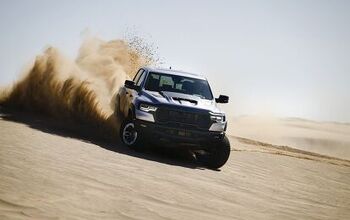


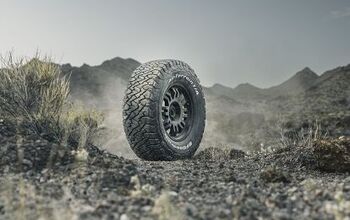
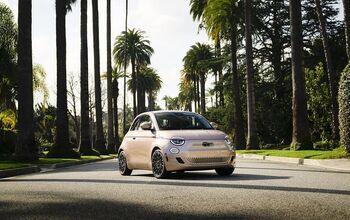
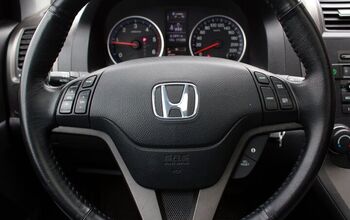
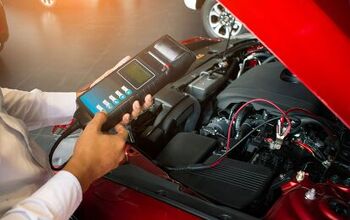





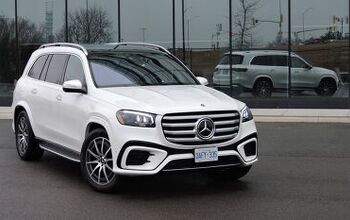
Comments
Join the conversation